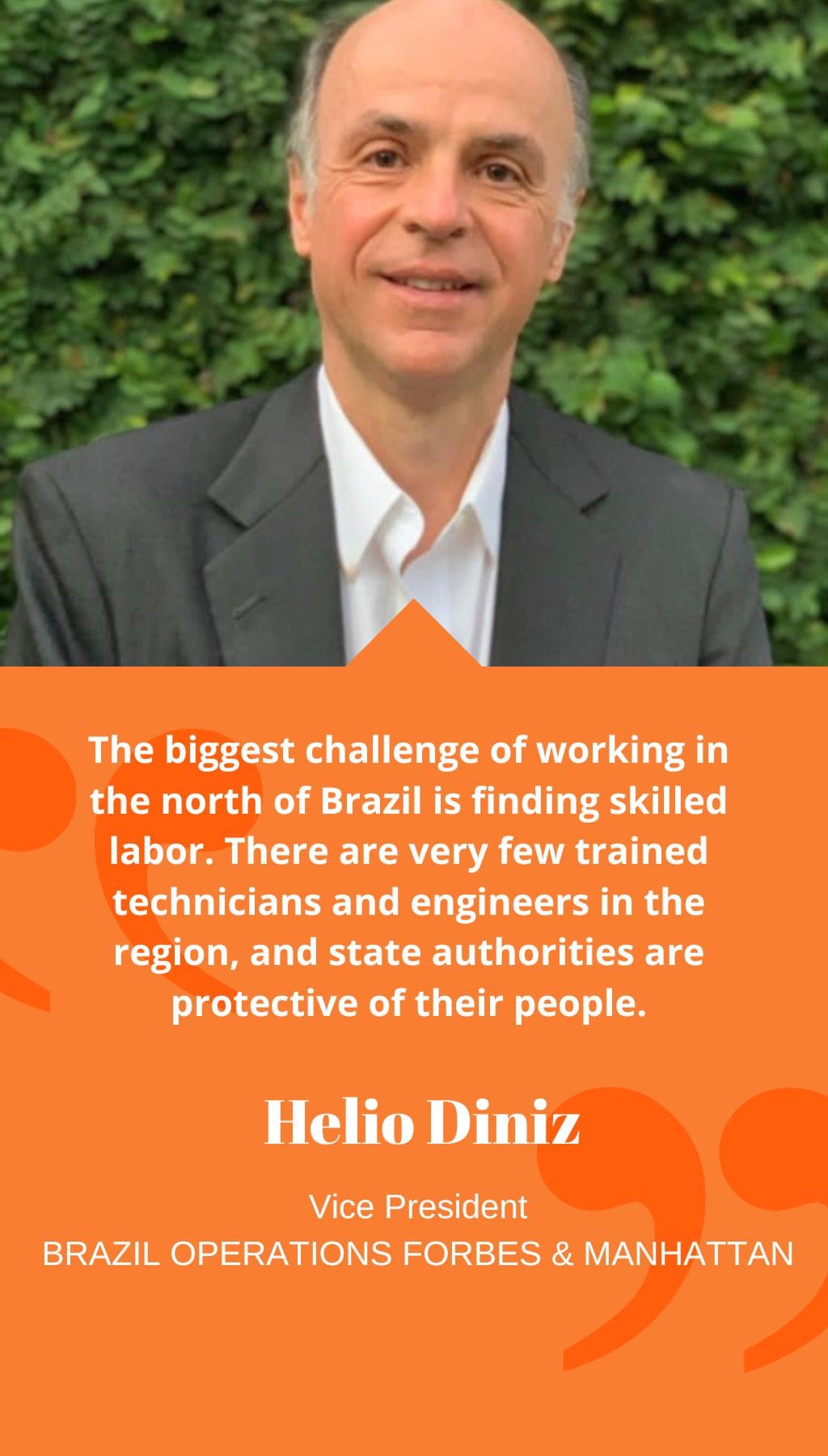
- Brazil | 19 March 2016

Can you explain Forbes and Manhattan’s business model and provide an overview of the Belo Sun Project?
Forbes and Manhattan’s business model is similar in Brazil to the one they use in Canada, where they manage multiple mining and exploration companies that operate independently but share support services. Some of these companies are publicly listed while others remain private, and Forbes and Manhattan usually holds a significant stake in the ownership of the company. Belo Sun is their most advanced project in Brazil, managed by Carlos Costa, formerly of Vale. It is a TSX listed company that is developing an open pit gold mine in Para State. The company has invested approximately $90 million in exploration since 2010 and is currently finalizing its feasibility study and working to obtain the necessary environmental licenses in 2015 to begin construction in 2016. The total capital investment for the project is estimated at $800 million, and if all goes well, it should be producing gold by 2016. The latest studies suggest that the project has a five million oz resource with a grade of 1.7g/mt, and pre-feasibility studies indicate that production could be around 320,000 oz/y.
What details can you provide on the Aguia Resources Company?
Aguia Resources currently owns two phosphate prospects in Brazil, one in Rio Grande do Sul and the other in Paraiba in the NE region. Both projects are in earlier stages of development than the Belo Sun project. The southern project is well-located to serve agricultural producers in the region, most of whom rely on imported phosphate from Morocco. The project benefits from being close to a railway and a port and has well-developed infrastructure. Currently, the company is working on resource delineation and a preliminary economic assessment (PEA). The grade of phosphate they are intercepting is approximately 4% P2O5, which will be concentrated up to 34% and then processed with sulfuric acid to produce Single Superphosphate (SSP). At the Paraiba prospect, the company has recently completed preliminary drilling and has determined that it has a good resource. However, more exploration work is needed to advance the project.
Can you tell us about the Brazil Potash Corp and Brazil’s domestic potash supply crisis?
Brazil Potash is a private company that has not been affected by the volatile market conditions. The company has spent $80 million on exploration to date and has eight rigs currently working at the site. The resource is located in a basin that could potentially provide all of Brazil’s potash needs. The company has a resource of over 600 million mt, which they continue to expand. The company is currently raising funds to carry out a final feasibility study. Demand for potash in Brazil is rapidly increasing due to the booming agribusiness industry. The company started work on the site in 2009 with a geological concept, and the following two years were spent proving this concept. In 2012, they raised $60 million to define the mineral resource. The deposit is shallow, with a reasonable capital expenditure and low operating expenditure, so the plan is to gain the necessary environmental licenses to put one area into production. There is immense potential for this project, as it deals with a similar geological environment to the main Canadian potash deposits, where there are 18 producing mines. In Brazil, there are currently none.
What are the main advantages and disadvantages of working in Brazil’s developing north?
The biggest challenge of working in the north of Brazil is finding skilled labor. There are very few trained technicians and engineers in the region, and state authorities are protective of their people, so it’s challenging to bring in large numbers of workers from the south. This has forced companies to invest a considerable amount in training programs.














